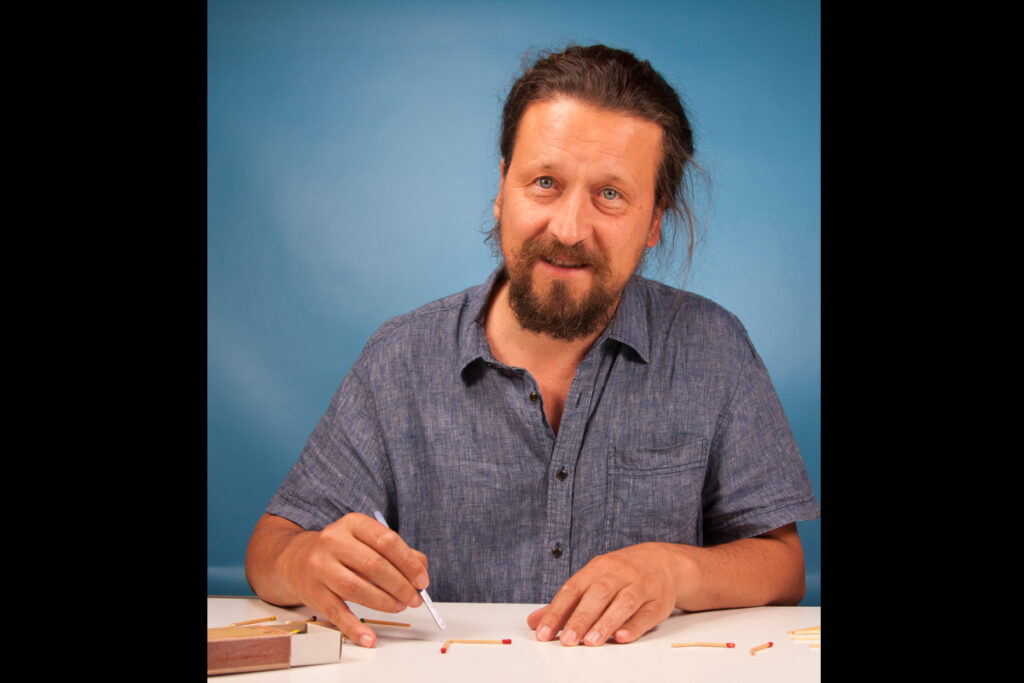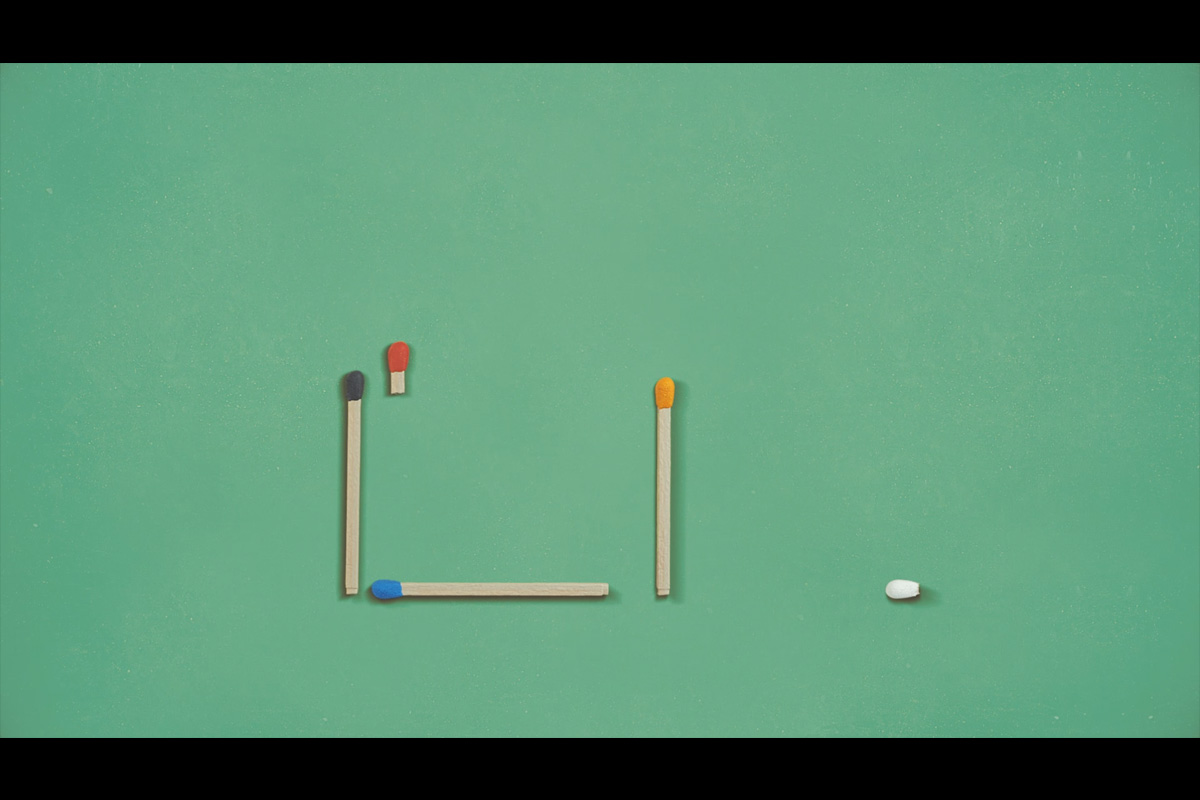Synopsis
A single matchstick, an easy-to-use object, and at the same an opportunity for creative experiences that evokes everyone’s fantasy. The main character of the whole series is a blue headed matchstick, that embarks on a journey in every episode and always returns to the box at the end of lots of strange, playful and imaginative adventures.
MITCH-MATCH
Director: Géza M. Tóth
Author: Géza M. Tóth
Music: Bertalan Baglyas
Producer: Géza M. Tóth
Production company: KEDD Animation Studio
Format: 52 x 2.5‘
Target audience: Family (6+)
Technique: Stop-motion

MITCH-MATCH is an interesting non-dialogue stop-motion animation series for a family audience, with plans to release its first season this year. The series is based on the short film MATCHES and both the film and the series are depicted only with matchsticks and great use of timing.
We see high potential in the project to stimulate the audience’s inspiration and imagination, regardless of age and culture. We feel the series can inspire the viewers to expand their imagination to the world around them. It could also let them know the fun and attractiveness of stop-motion animation.
Oscar-nominated Géza M. Tóth, the head of KEDD Animation Studio located in Hungary, is the driving force of the project team. He is the director, author, designer, storyboard artist, and producer of the series. We heard from him on the story behind the creation of the series.
Interview with Géza M. Tóth
Hideki Nagaishi (HN): What kind of experience do you want to deliver to the audience through this series? How do you expect the audience to enjoy this series?
Géza M. Tóth: I like to play, not because of the result of winning or losing. I am attracted by the play itself and I feel a deep connection with childlike playfulness and imagination.
With Mitch-Match I wanted to model the resourceful way of thinking, that we are able to see something more in simple objects. The series is built on this creative idea and tells stories in the simplest possible way by animating a tiny object – a matchstick.
I caught a blue-headed matchstick as the main character of the whole series – and focused on finding a minimal sign that can activate the viewer’s imagination. The concept builds on a creative partnership with the audience: every episode is a matchstick puzzle, where we have to “pull the focus” to our fantasy in every second.
HN: I’m curious on how kids will react to this series. Did you see or hear children’s reaction to the film or this series? If so, could you please share that with us?
Géza M. Tóth: The kids enjoy watching the series, but what’s special is the enthusiasm of the adults. Even elderly people were open for the play that Mitch-Match offers, they really enjoyed solving puzzles.
Watching Matches is amusing for everyone because – in the simplest possible way, by moving a tiny, ordinary object – it engages the viewer in the storytelling.
HN: This series and the film MATCHES, which the series is based on, are both depicted with only matchsticks. How did you come up with the idea for that?
Géza M. Tóth: Mitch-Match takes advantage in the measure of the possibilities offered by the short film’s creative concept, which was inspired by a true event.
A few years ago, I met a little boy on the street squatting in front of a house. He played with some colored matchsticks. As an external bystander, I couldn’t attribute any meaning to the matchsticks, but it was obvious that for the boy these few simple objects were exciting stories, complex systems of relationships.
I looked upon him with admiration while he – without even noticing me – was lost in the play with the matchsticks. That’s when the idea for the film MATCHES was born.
First, I made audio recordings with a 7-year-old boy who told me with great empathy about his dreams, fears, joys and desires. Listening to his monologue, I started myself playing with colored matchsticks, and as the soundtrack sentences and the design on my desk were connected, the film’s structure was slowly born.
HN: How did you create stories using only matches?
Géza M. Tóth: Each puzzle assumes a quiz master in the background who creates these puzzles. My task was similar to this: I come up with witty stories waiting to be solved, which will delight the viewers.
I have been teaching for almost 30 years whose beauty lies in the same attitude: to prepare and develop students and help them discover the profession on their own, while I am always one step ahead of them.
I’m also ahead of the viewer in making the Mitch-Match series and as soon as I animate the images, the stories immediately make sense and the opportunity of solution is born for the audience.
HN: You developed your Oscar-nominated film Maestro (2005) with CGI. Could you please let us know why you’ve chosen stop-motion with real matchsticks as the medium?
Géza M. Tóth: We find it a much easier, less speculative way for the audience if they see that we are moving physically a simple object. Otherwise, we also used digital programs in post-production.
HN: How did you decide on the topics and scenes for each short episode?
Géza M. Tóth: I fold a couple of matchsticks on the table, move them back and forth, break them into smaller pieces until a story unfolds. It’s not the content that matters, but it’s the form: I get inspiration from looking at these objects until I see a little story into them.
Moving along my imagination, the colorful matchsticks are transformed for me into situations, connections, sometimes appearing for me as figures while at other times they transform into objects. After then we animate these visions.
HN: Could you please let us know your story behind the music composition for this series? I also would like to hear your intention with the music in this series.
Géza M. Tóth: For me, one of the most important parts is to always develop and make the sound design of the film. This is especially true in this series, since the audience has to decipher the stories based on limited visual stimuli. The less impulses they get visually, the more we try to give with the sound.
There is no typical soundtrack in Mitch-Match, but noise and sound effects organized by music-based logic, which is able to give the viewer a sure point of view even without images. It’s a kind of radio-play-like material from which we can figure out what each episode is about. In most films, sound design and music add 20-30% to the interpretation of the film. In this case, it is 50%, and without sound design the episodes are ineffective, making the film uninterpretable.
It is a great experience for me to make this series, and I hope with Mitch-Match we were able to bring real joy to the viewers.






